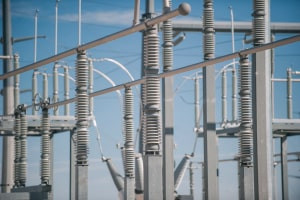We offer essential skills and insight into the protection of power system networks in this free online electrical engineering course. Power system protection addresses the safeguarding of an electrical power system from faults. Faults can cause extensive damage to equipment and result in interruption of power supply, hazards to personnel and loss of revenue to power supply companies. Power protection systems work by isolating the components that are faulty and leaving the rest of the system operable. We discuss the distinction between power protection devices and ‘switchgear’ and explain how each plays a role in protecting power systems. We then examine different faults and establish their effect on electrical components. The course then covers various types of protective relays, including the thermal, attracted armature, induction and balanced beam relays. We then delve into the materials used to make these relays, their application, advantages and disadvantages. We also demonstrate how to calculate their behaviour with the universal torque equation.
The course then covers current-based relaying schemes and the overcurrent protection of transmission lines in detail. We study the various types of overcurrent protection relays, including the instantaneous overcurrent relay, definite minimum time overcurrent relay, inverse time overcurrent relay and the inverse definite minimum time overcurrent relay. We break down the plug setting (PS) and time dial settings (TDS) of overcurrent relays and show you how to calculate PS and TDS through examples of each type of overcurrent relay. We also discuss the application of overcurrent relay and establish its advantages and disadvantages. The course then moves on to the discrimination philosophy of relays as we study current discrimination, time discrimination and current-time discrimination. We examine directional and non-directional relays before introducing you to the distance relay and breaking down the classification of relays into phase and ground variants. The course investigates the effect of fault resistance and power swings on the performance of distance relays and analyzes fault distance measurement and stepped distance.
We conclude with the reach of distance relays and the various types of distance relay, including the impedance, reactance, mho or admittance relay, ohm or angle impedance relay, offset mho relay and more. Power system protection is an essential aspect of the power system networks that keep our world running. If you are considering a career path in power system networks or are a professional looking to refresh or enhance your skills, then this electrical engineering course is for you.
What You Will Learn In This Free Course
View All Learning Outcomes View Less All Alison courses are free to enrol study and complete. To successfully complete this course and become an Alison Graduate, you need to achieve 80% or higher in each course assessment. Once you have completed this course, you have the option to acquire an official , which is a great way to share your achievement with the world.
Your Alison is:
- Ideal for sharing with potential employers
- Great for your CV, professional social media profiles and job applications.
- An indication of your commitment to continuously learn, upskill & achieve high results.
- An incentive for you to continue empowering yourself through lifelong learning.
Alison offers 3 types of s for completed courses:
- Digital : a downloadable in PDF format immediately available to you when you complete your purchase.
- : a physical version of your officially branded and security-marked
All s are available to purchase through the Alison Shop. For more information on purchasing Alison , please visit our FAQs. If you decide not to purchase your Alison , you can still demonstrate your achievement by sharing your Learner Record or Learner Achievement Verification, both of which are accessible from your Account Settings.














 Avg Hours
Avg Hours CPD Accredited
CPD Accredited
 Total XP:
Total XP: 
 Knowledge & Skills You Will Learn
Knowledge & Skills You Will Learn






